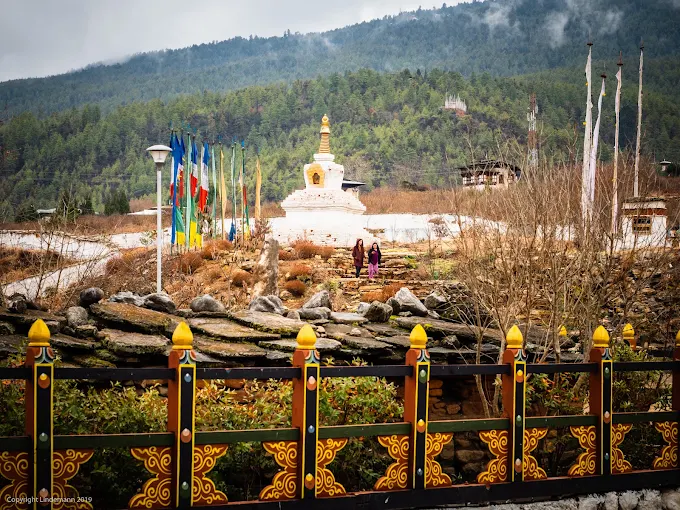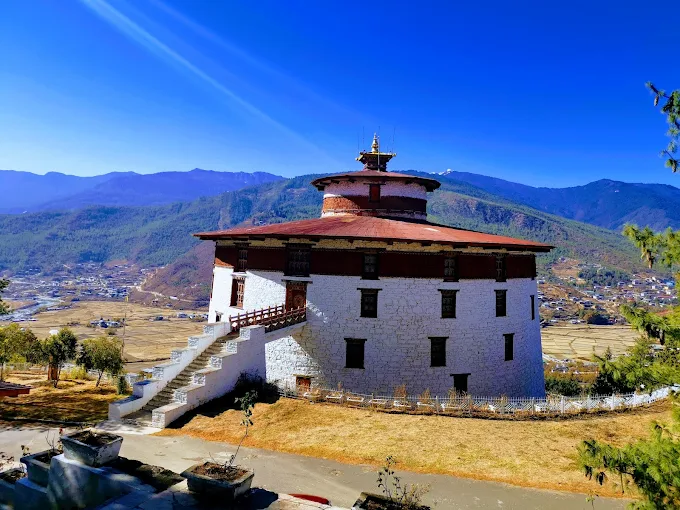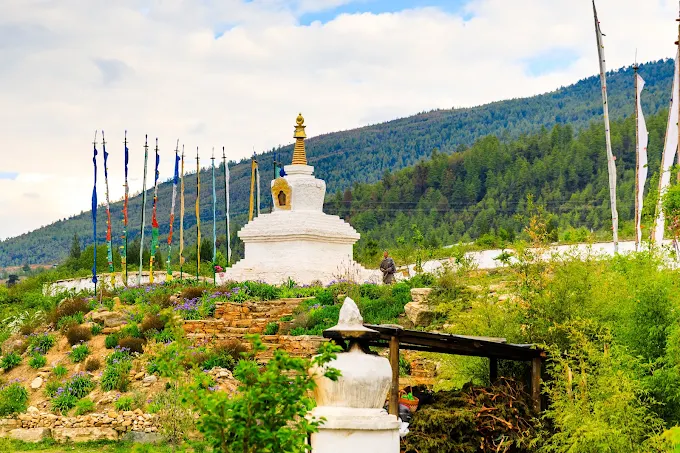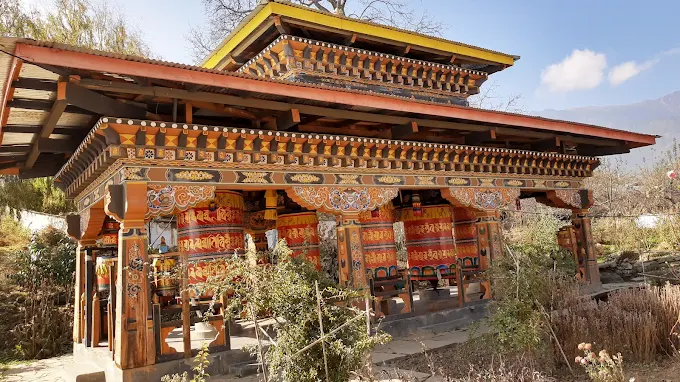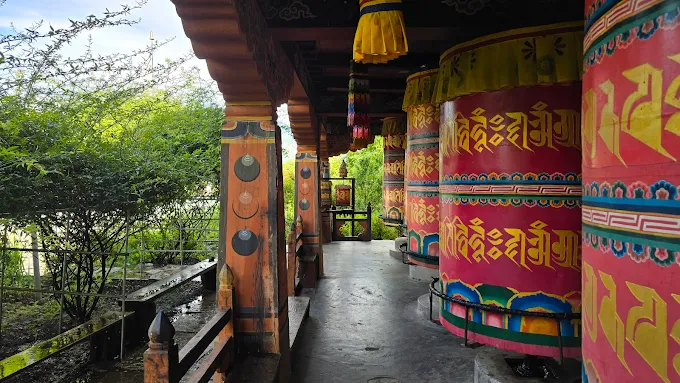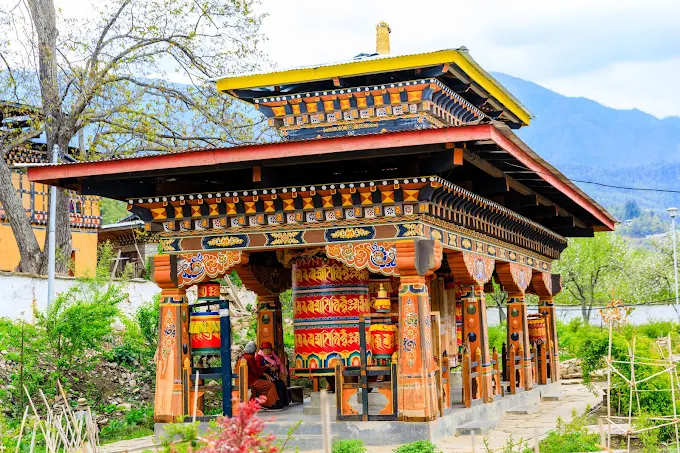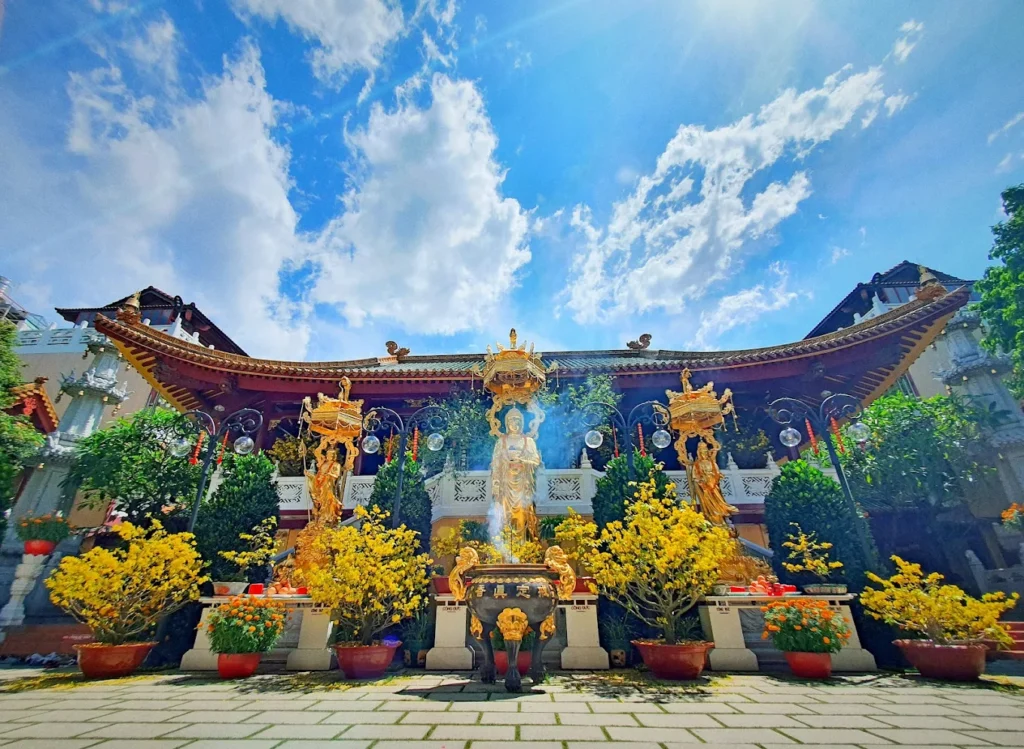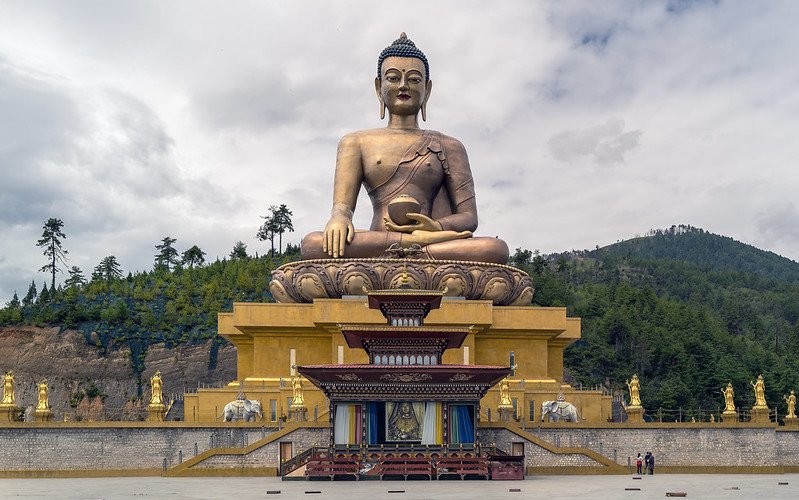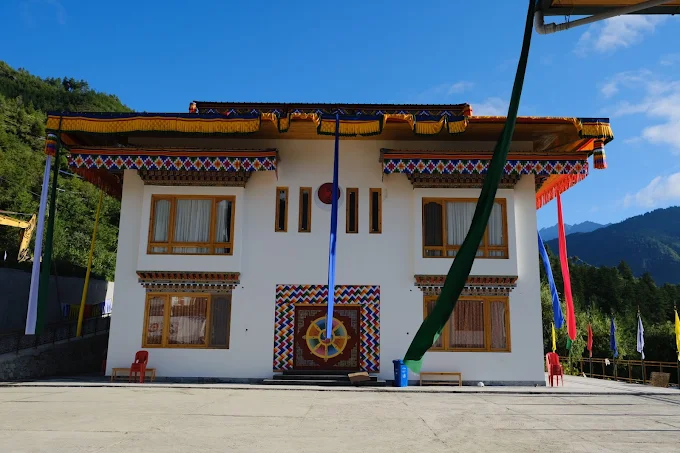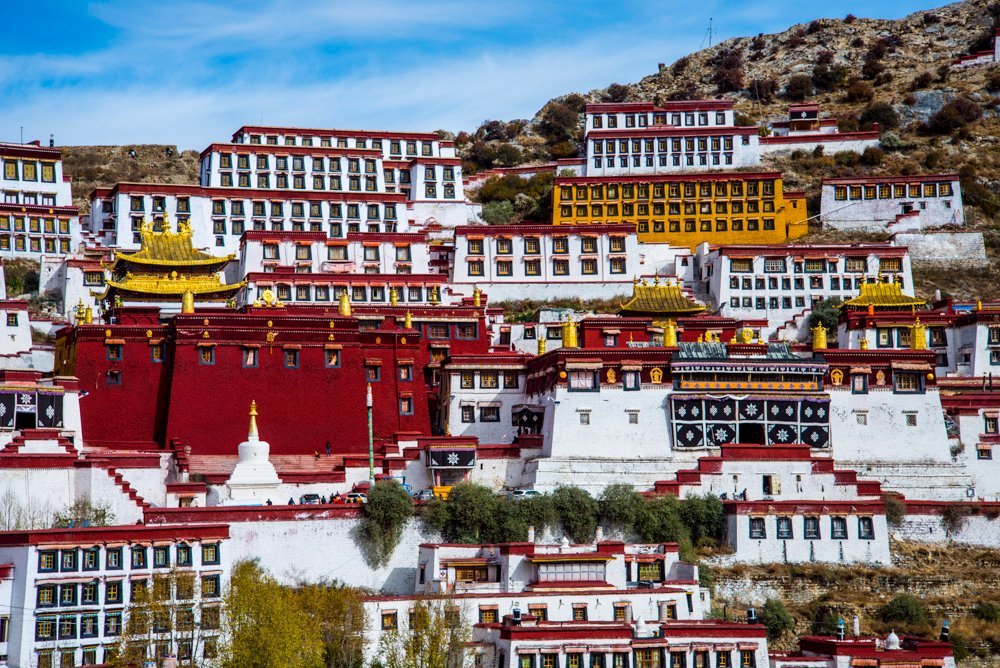Kyichu Lhakhang: The Ancient Heart of Bhutan’s Faith
Overview and Significance
Essence of Kyichu Lhakhang
Nestled in the serene Paro Valley of Bhutan, Kyichu Lhakhang stands as one of the country’s oldest and most sacred temples, its weathered walls whispering tales of a 7th-century origin. This modest yet profound sanctuary, with its whitewashed facade and golden spire, embodies the dawn of Buddhism in Bhutan. Built by Tibetan king Songtsen Gampo to pin down a mythical demoness, it radiates an aura of timeless devotion, drawing pilgrims and travelers to its tranquil courtyard. For those who step through its wooden gates, Kyichu Lhakhang offers a rare glimpse into Bhutan’s spiritual roots, where history and faith intertwine.
- Defining Trait: One of Bhutan’s oldest temples, tied to the subjugation of a demoness.
- Spiritual Role: A cornerstone of Bhutanese Buddhism, symbolizing its Tibetan origins.
- Visitor Appeal: A serene haven for cultural explorers and spiritual seekers.
Unlike the dramatic cliffside perch of Paro Taktsang, Kyichu’s understated presence invites quiet reflection. Its lush surroundings—orange groves and prayer flags fluttering in the breeze—create a meditative atmosphere, grounding visitors in Bhutan’s pastoral beauty. For locals, it’s a living shrine where prayers are offered daily; for outsiders, it’s a portal to an ancient world where myth shapes reality.
Historical Evolution
Kyichu Lhakhang’s story begins in 659 CE, when Songtsen Gampo, the Tibetan king credited with spreading Buddhism, built it as one of 108 temples to subdue a demoness threatening the Himalayan region. Kyichu, targeting her left knee, became a spiritual anchor for Bhutan. Over centuries, it grew from a single shrine to a complex with two temples: the original Jowo Lhakhang and the later Guru Lhakhang, added in the 8th century to honor Guru Rinpoche. Royal patronage, notably from Bhutan’s queens, ensured its preservation.
- Key Milestones:
- 659 CE: Songtsen Gampo constructs Kyichu to pin down the demoness.
- 8th Century: Guru Rinpoche visits, consecrating the site and adding a shrine.
- 1968: Queen Ashi Kesang Choden Wangchuck expands the temple, adding a golden canopy.
- Ongoing: Monks and locals maintain its sanctity through daily rituals.
Unlike many ancient sites, Kyichu has escaped major destruction, its longevity attributed to divine protection in local lore. A 1971 restoration by the queen mother reinforced its walls, blending traditional mud-and-stone techniques with modern durability. Legends tell of sacred relics buried beneath the temple, hidden by Songtsen Gampo to ward off evil. Today, Kyichu stands as a testament to Bhutan’s enduring faith, its history a tapestry of royal devotion and spiritual resilience.
Cultural Impact
Kyichu Lhakhang is a cultural touchstone, embodying Bhutan’s Buddhist heritage and its ties to Tibetan traditions. It serves as a pilgrimage site where locals seek blessings for newborns, marriages, and safe journeys, their offerings of butter lamps illuminating the shrine. The temple’s annual festival, though smaller than Paro Tshechu, unites the valley’s villages in prayer and celebration, reinforcing community bonds.
- Local Role: A daily pilgrimage site for blessings and rituals.
- National Symbol: Represents Bhutan’s ancient Buddhist roots and royal legacy.
- Global Influence: Draws scholars studying early Himalayan Buddhism.
Globally, Kyichu captivates historians and Buddhist practitioners for its role in Songtsen Gampo’s 108-temple project, a feat spanning modern-day Tibet, Bhutan, and India. Its simplicity contrasts with grander sites like Lhasa’s Jokhang, yet its age and authenticity earn it reverence. Travel blogs and academic journals highlight Kyichu as a must-visit for understanding Bhutan’s spiritual evolution, while Bhutan’s tourism policies protect it from overcrowding, preserving its sanctity.
Signature Legacy
Kyichu’s legacy lies in its mythical founding as a demon-subduing temple. According to legend, Songtsen Gampo envisioned a giant demoness lying across the Himalayas, her body disrupting Buddhist teachings. Kyichu, pinning her left knee, and Jokhang in Lhasa, her heart, anchored her forever. This tale infuses the temple with a sense of cosmic purpose, felt in the ancient Jowo Lhakhang, where a 7th-century statue of Jowo Sakyamuni Buddha resides.
- Mythical Allure: The demoness narrative blends geography with spirituality.
- Sacred Statue: The Jowo Sakyamuni, believed to be self-manifested, radiates divinity.
- Pilgrim Stories: Locals recount miracles, like healings tied to prayers at Kyichu.
Anecdotes abound of devotees finding solace at Kyichu. One tale speaks of a barren couple who, after praying at the Jowo shrine, welcomed a child, attributing it to the temple’s blessings. Such stories, passed through generations, cement Kyichu’s status as a place of hope and divine intervention, its legacy woven into Bhutan’s spiritual fabric.
Community and Global Reach
Kyichu binds Paro’s communities, with farmers offering rice and monks tending shrines. Women, especially, flock to the temple, praying to Chenrezig, the bodhisattva of compassion, whose statue graces the Guru Lhakhang. The temple also attracts global pilgrims, particularly from Tibet and Nepal, who see it as a sister site to Lhasa’s Jokhang.
- Community Engagement: Locals donate food and funds, sustaining rituals.
- Monastic Role: Monks guide prayers and teach young novices.
- Global Pilgrims: Draws Buddhists tracing Songtsen Gampo’s legacy.
Bhutan’s diaspora honors Kyichu through prayers and remittances for its upkeep. International scholars, intrigued by its 7th-century origins, visit to study its artifacts, while conservationists advocate for its preservation. Bhutan’s regulated tourism ensures Kyichu remains a living temple, its global reach tempered by a commitment to sanctity.
Architectural Features
Distinctive Design
Kyichu Lhakhang’s architecture is a study in elegant simplicity, its low-slung buildings blending seamlessly with the Paro Valley’s landscape. The Jowo Lhakhang, the original 7th-century temple, features mud-and-stone walls, their earthy tones softened by time. The Guru Lhakhang, added later, introduces wooden beams and a golden spire, reflecting Bhutanese aesthetics. Unlike fortress-like dzongs, Kyichu’s design prioritizes intimacy, its compact courtyard fostering quiet devotion.
- Earthy Aesthetic: Mud walls evoke ancient Himalayan construction.
- Golden Spire: A later addition, symbolizing spiritual aspiration.
- Courtyard Layout: Centers devotion, with prayer wheels and chortens.
The temple’s orientation aligns with geomantic principles, believed to enhance its demon-subduing power. Surrounding orange trees, planted by devotees, add vibrant color, their scent mingling with incense. The 1968 expansion added a protective canopy, blending tradition with royal patronage, ensuring Kyichu’s timeless charm endures.
Signature Structures
The Jowo Lhakhang houses the temple’s heart: a 7th-century statue of Jowo Sakyamuni Buddha, its serene gaze captivating devotees. The Guru Lhakhang, built to honor Guru Rinpoche, features a statue of Chenrezig, its 11 heads and 1,000 arms symbolizing boundless compassion. A small chorten, believed to contain Songtsen Gampo’s relics, stands in the courtyard, a focal point for circumambulation.
- Jowo Lhakhang: The ancient core, centered on the Sakyamuni statue.
- Guru Lhakhang: Honors Guru Rinpoche and Chenrezig.
- Chorten: A sacred relic site, drawing pilgrims’ reverence.
Wooden galleries, added in the 19th century, connect the temples, their carved railings depicting lotus flowers. A bell tower, its bronze chime rung during rituals, adds a melodic layer to the site. These structures, though modest, create a harmonious whole, each element amplifying Kyichu’s spiritual weight.
Artisanal Mastery
Kyichu’s craftsmanship reflects Bhutan’s sacred artistry. Murals in the Jowo Lhakhang, painted with mineral pigments, depict the Buddha’s life, their faded hues hinting at centuries of devotion. Thangkas in the Guru Lhakhang, embroidered with silk, portray Guru Rinpoche’s manifestations, their intricate details glowing by lamplight. Wooden altars, carved with cloud motifs, showcase Paro’s woodworking heritage.
- Murals: Vibrant narratives, using reds, blues, and ochres.
- Thangkas: Portable art, crafted for ritual use.
- Woodwork: Carvings symbolize cosmic harmony.
The 1971 restoration revived these crafts, with artisans sourcing local pigments and timber. The golden canopy, forged by metalsmiths, required months of hand-beating copper sheets, a labor of devotion. Monks oversee maintenance, ensuring murals and thangkas remain vibrant, their work a living prayer to Kyichu’s sanctity.
Hidden Architectural Gems
Kyichu’s subtler features enchant the observant. A stone slab near the Jowo Lhakhang, etched with mantras, is believed to mark the demoness’s knee, a nod to the temple’s myth. Prayer wheels, embedded in the courtyard walls, spin with a gentle creak, their bronze surfaces worn by countless hands. A small shrine to Tara, tucked behind the Guru Lhakhang, draws women seeking fertility blessings.
- Mantra Stone: A mythical marker of the demoness’s defeat.
- Prayer Wheels: Tactile links to Buddhist practice.
- Tara Shrine: A quiet haven for female devotees.
These elements, often missed by rushed visitors, deepen Kyichu’s allure. The stone’s weathered inscriptions invite contemplation, while the prayer wheels’ rhythm soothes. The Tara shrine, adorned with butter lamps, offers an intimate space for personal prayers, its presence a testament to Kyichu’s inclusivity.
Preservation and Evolution
Preserving Kyichu demands vigilance against time and elements. The 1971 restoration reinforced mud walls with stone, protecting against monsoon erosion. Artisans train in traditional techniques, mixing pigments by hand to retouch murals. Earthquakes, a Himalayan risk, prompt regular structural checks, funded by royal grants.
- Restoration Efforts: Blended ancient methods with modern stability.
- Artisan Skills: Preserve murals and woodwork through training.
- Environmental Challenges: Monsoons and quakes test durability.
Bhutan’s government, with community support, monitors Kyichu’s condition, ensuring its relics remain intact. Solar-powered lighting, discreetly added, reduces reliance on candles, minimizing fire risks. These efforts keep Kyichu vibrant, its architecture a bridge between its 7th-century origins and modern devotion.
Rituals and Practices
Sacred Daily Rites
Each morning, Kyichu’s monks chant mantras, their voices filling the Jowo Lhakhang as butter lamps flicker before the Sakyamuni statue. Devotees offer water bowls, their ripples catching the dawn’s light, symbolizing purity. Incense, lit in bronze burners, sends fragrant smoke curling through the courtyard, creating a serene ambiance.
- Morning Chants: Recite prayers like the Heart Sutra.
- Butter Lamps: Lit daily, symbolizing wisdom’s light.
- Offerings: Water and incense purify the shrines.
The rituals’ simplicity belies their depth, each act reinforcing Kyichu’s sanctity. Unlike larger temples, the intimate setting lets visitors feel the chants’ resonance, the air thick with devotion. Monks move with quiet precision, their red robes a vivid contrast to the temple’s muted tones.
Unique Spiritual Practices
Kyichu’s practices reflect its ancient roots. Pilgrims circumambulate the chorten, spinning prayer wheels to accrue merit. Women offer khatas to Chenrezig, praying for compassion and fertility, their scarves draping the statue in white silk. On special days, monks bless water from a sacred spring, believed to heal ailments.
- Circumambulation: A meditative walk around the chorten.
- Khata Offerings: Symbolize devotion and purity.
- Holy Water: Blessed for healing, distributed sparingly.
These practices, tied to Tibetan Buddhism, create a tangible connection to Kyichu’s myths. The spring’s water, drawn from a hidden source, carries an aura of mystery, with pilgrims sipping it reverently. For locals, these acts are daily affirmations of faith, grounding them in Kyichu’s enduring power.
Vibrant Festival Traditions
Kyichu’s annual festival, held in autumn, honors Songtsen Gampo with chants and butter sculpture offerings. Monks perform torma rituals, crafting dough figures to appease spirits, while locals dance in traditional attire, their movements echoing Himalayan rhythms. The event, though smaller than major tshechus, fosters unity across Paro’s villages.
- Torma Rituals: Dough offerings to pacify spirits.
- Community Dances: Unite locals in celebration.
- Offerings: Butter sculptures symbolize abundance.
Other occasions, like Losar, see quieter rites, with monks praying for prosperity. Visitors during the festival witness Kyichu’s warmth, as families share tea and laughter amid prayer flags. The contrast between the temple’s ancient walls and the vibrant festivities creates a timeless, communal joy.
Visitor Engagement
Visitors can join simple rituals, enhancing their experience. Lighting butter lamps, available for a small donation, lets tourists pray alongside locals. Spinning prayer wheels offers a tactile link to Buddhist practice, their gentle hum soothing the mind. Guides teach basic mantras, allowing visitors to chant softly during circumambulation.
- Butter Lamps: An accessible act of devotion.
- Prayer Wheels: Spinning accrues spiritual merit.
- Mantra Chanting: Fosters a deeper connection.
These acts bridge cultural divides, letting outsiders share Kyichu’s spirituality. Photography is restricted inside shrines, but sketching or journaling is encouraged, capturing the experience. The act of praying at Kyichu, surrounded by ancient relics, feels like stepping into Bhutan’s sacred past.
Monastic and Community Roles
Kyichu’s monks, often elderly masters, lead rituals while mentoring novices in Buddhist texts. They bless amulets, which locals wear for protection, and guide pilgrims with quiet wisdom. The community sustains the temple, donating rice and butter, especially during festivals, seeing it as a sacred duty.
- Monastic Duties: Chanting, teaching, and shrine upkeep.
- Community Support: Donations ensure Kyichu’s vitality.
- Cultural Continuity: Monks and locals preserve traditions.
During festivals, monks lead prayers, linking Kyichu to Paro’s villages. Women play a key role, organizing offerings and cleaning shrines, their devotion palpable. This interplay of monastic and lay efforts makes Kyichu a living ecosystem, its rituals thriving on collective faith.
Visitor Information
Navigating to Kyichu Lhakhang
Kyichu Lhakhang lies 5 km from Paro town, a 10-minute drive along a quiet road. The temple sits amid rice fields, with a dirt path leading to its gate, marked by prayer flags. Landmarks include a nearby chorten and orange groves, their scent greeting visitors. The route is flat, making it an easy stop on Paro itineraries.
- Starting Point: Paro town, near the main market.
- Landmarks: Chorten and orange trees near the entrance.
- Route: A short, scenic drive or 1-hour walk.
Taxis cost ~$5, or guided tours include Kyichu with other sites. Walking from Paro offers a leisurely pace, passing traditional houses. Guides, required for tourists, share legends, enriching the visit with tales of Songtsen Gampo and the demoness.
Visiting Hours and Etiquette
Kyichu is open daily from 8 AM to 5 PM, with a brief closure from 1 PM to 2 PM for monk prayers. Morning visits (8-10 AM) offer tranquility, ideal for reflection. Entry is covered by Bhutan’s $100 daily tourist fee, with permits checked by guides.
- Hours: 8 AM–1 PM, 2 PM–5 PM; open all year.
- Permits: Included in tourist fee, arranged by operators.
- Best Time: Spring or autumn for mild weather.
Etiquette requires modest dress (long sleeves, no shorts), removing shoes before entering shrines, and avoiding pointing at statues. Speak softly and follow guides to respect rituals. Photography is banned inside but allowed in the courtyard, capturing prayer wheels and chortens.
Accessibility and Safety
Kyichu is accessible, with flat paths and no major climbs, suitable for most visitors. Wheelchair users may need assistance over uneven courtyard stones, but ramps lead to the main shrines. The temple’s low altitude (2,200 meters) poses minimal health risks.
- Mobility: Flat terrain, minor obstacles for wheelchairs.
- Health: Low altitude, no acclimatization needed.
- Safety: Safe area, but watch for slippery stones in rain.
Monsoon season (June-August) can make paths muddy, so wear sturdy shoes. Guides carry first-aid kits, and Paro’s clinic is nearby. Stay on marked paths to avoid private fields, respecting local property.
Amenities and Surroundings
Kyichu has no on-site facilities, but Paro town offers hotels, restaurants, and restrooms 10 minutes away. A small stall near the gate sells water and snacks. The surrounding valley, with rice paddies and Himalayan peaks, creates a peaceful backdrop, the air crisp with pine and citrus.
- Nearby Amenities: Paro’s eateries serve ema datshi and tea.
- On-Site: Basic stall for drinks and snacks.
- Sensory Details: Citrus scents, prayer flags’ rustle, distant cowbells.
Paro’s markets, a short drive away, sell thangkas and prayer beads, ideal souvenirs. Evening walks in the valley reveal starlit skies, complementing Kyichu’s calm. The temple’s garden, with blooming flowers, offers a quiet spot to rest post-visit.
Immersive Visitor Tips
Visit at dawn to see monks light butter lamps, their glow illuminating the Sakyamuni statue. Sketch the chorten in the courtyard, capturing its ancient form without photography. Walk the valley’s paths post-visit, passing farmers and prayer flags, to soak in Paro’s rural charm. Pair Kyichu with a trip to Paro’s Rinpung Dzong for contrasting scales of Bhutanese architecture.
- Dawn Visit: Witness morning rituals in serene light.
- Sketching: Record the chorten’s details meditatively.
- Valley Walks: Explore Paro’s pastoral beauty.
Engage guides for stories about the demoness, adding depth to the visit. Wear layers for cool mornings, and carry a journal to note impressions. These touches make Kyichu a personal journey, blending history, faith, and Bhutan’s timeless allure.

